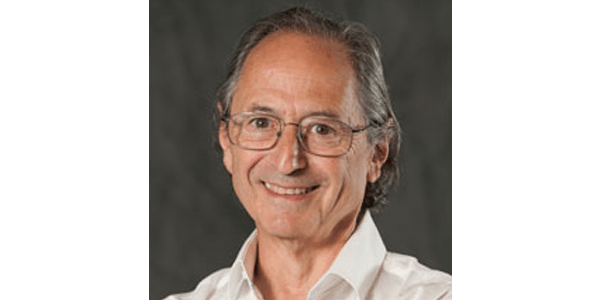UW Bioengineering Professor Dr. Valerie Daggett is hosting December 2014’s UW Walker Ames lecturer, Dr. Michael Levitt, the Robert W. Vivian K. Cahill Professor of Cancer Research in the Department of Structural Biology at Stanford School of Medicine.
Dr. Levitt is a 2013 Nobel Laureate in Chemistry and was also Dr. Daggett’s postdoc adviser in the early 1990s.
Bioengineering faculty, students and staff are invited to attend the lecture, Thursday, December 4 at 6:30 p.m. in Kane Hall, Room 110.
Talk abstract and Dr. Levitt’s bio:
Birth and Future of Multi-scale Modeling of Macromolecules
The development multiscale models for complex chemical systems, begun in 1967 with publications by Warshel and Levitt, was recently recognized by the 2013 Nobel Committee for Chemistry. The simplifications used then at the dawn of the age of computational structural biology were mandated by computers that were almost a billion times less cost-effective than those we use today. These same multiscale models have become increasingly popular in applications that range from simulation of atomic protein motion to protein folding to explanation of enzyme catalysis. In this talk, I describe the origins computational structural biology and then go on to show some of the most exciting current and future applications.
About Michael Levitt
When Michael Levitt, winner of the 2013 Nobel Prize in Chemistry, began his theoretical modeling of large chemical systems in 1967, digital computers had only a fraction of the processing abilities they do today. The pioneering work of Levitt harnessed the rapid growth of computational power to create complex multiscale chemical models with a wide range of applications, from the simulation of atomic protein motion to the explanation of enzyme catalysis and protein folding. Join us as Levitt describes computational structural biology’s beginnings and future, as well as how today’s work will inform biomedical and material science applications in the years to come.
Born in South Africa 1947, Michael Levitt visited London at age 16, where he was profoundly influenced by John Kendrew’s 1944 BBC TV series “The Thread of Life.” After a BSc in London and a year with Prof. Shneior Lifson and his PhD student Arieh Warshel at the Weizmann Institute in Israel, Dr. Levitt joined the Laboratory of Molecular (LMB), Cambridge, in 1968.
Levitt went back to Israel as an EMBO postdoc with Lifson. Collaboration then with Warshel resulted in new multi-scale approaches to molecular modeling: coarse-grained models that merge atoms to allow folding simulation and hybrid models that combine classical and quantum mechanics to suggest enzymes works by electrostatics. In 1974, he returned to LMB for three years, spent two years with Francis Crick at Salk and seven years at Weizmann, before moving to Structural Biology at Stanford from 1987.
Levitt’s diverse interests have included RNA & DNA modeling, protein folding simulation, classification of protein folds and protein geometry, antibody modeling, x-ray refinement, antibody humanization, side-chain geometry, torsional normal mode, molecular dynamics in solution, secondary structure prediction, aromatic hydrogen bonds, structure databases, and mass spectrometry.
While enjoying membership of the Royal Society and the National Academy, Levitt remains an active programmer, a craft skill of which he is particularly proud. Married in 1968 to Rina, an active artist, they have three children and a rapidly increasing number of grandchildren, all of whom help him stay more-or-less normal.


